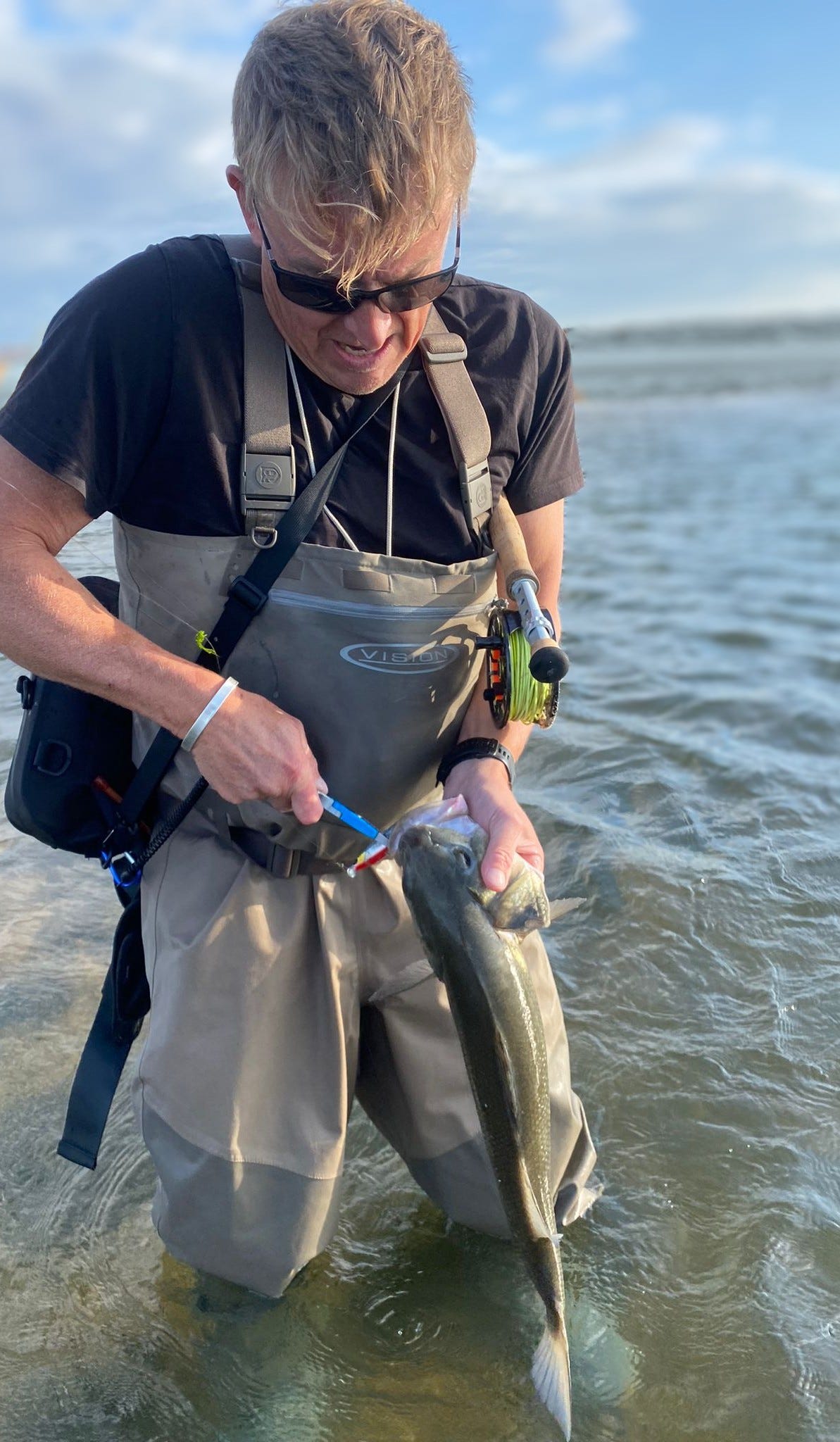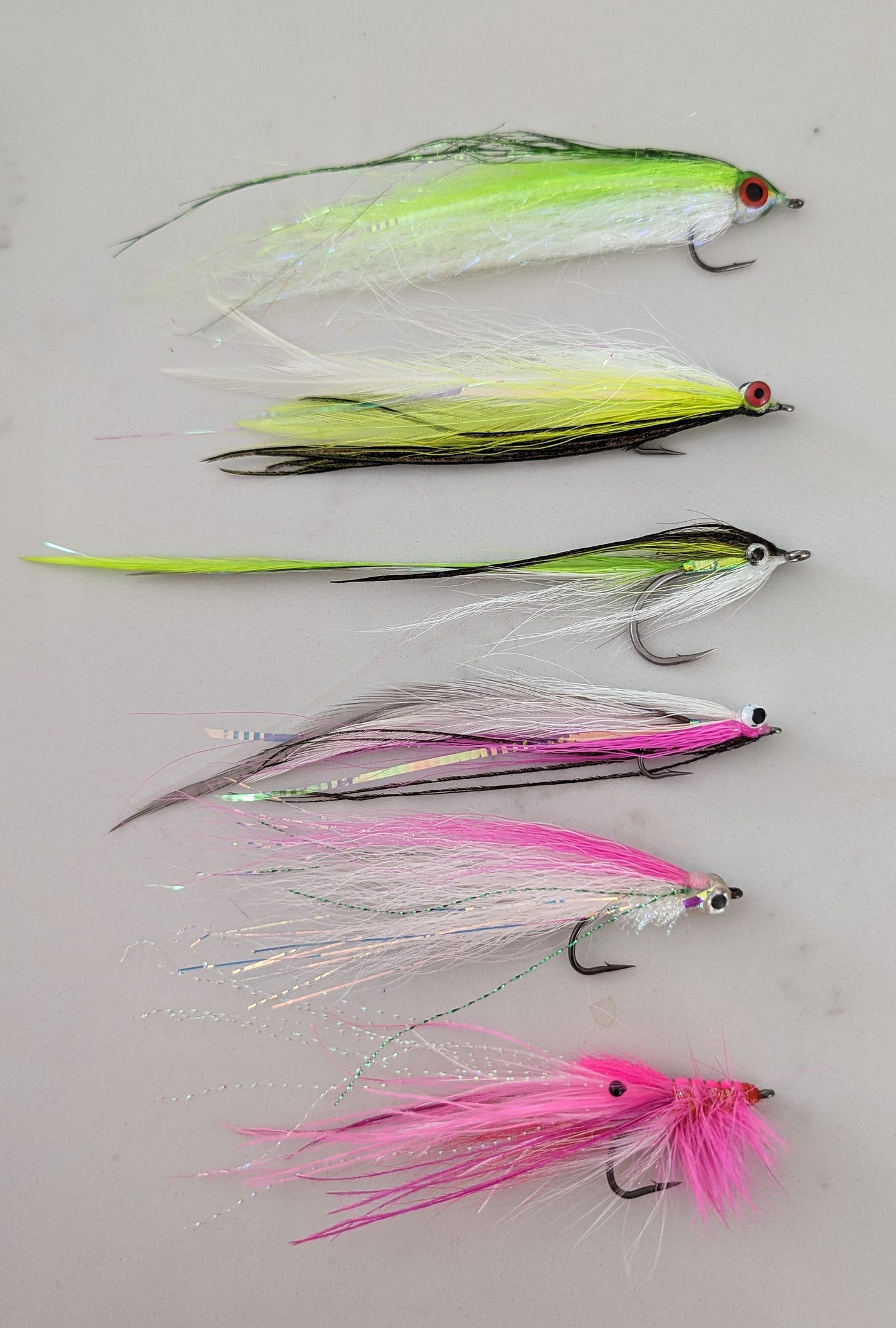The sea is literally creaking with fish. More bait at this time of year than anyone has seen, mackerel beaching themselves and bass in so many numbers if only you have a kayak.
It’s been a mackerel-heavy week this week in an attempt to keep our lobster pots filled with last night seeing a string of 35cm plus fish come out of a boiling sea. Hard to actually get a spot on the shingle with the hordes of hungry anglers after an easy supper but with a thick line of black bait pushed tight into the shore the sea-rats were literally everywhere.
We also briefly fished the reef yesterday, a favourite mark that’s fallen out of favour but our nostalgia was rekindled via the hundreds of birds doing a feeding dance upon shallow water. On closer inspection, their favourite tune was being thumped out by a vast shoal of bait, so thick as to completely obscure all other light-consuming molecules.
A black hole of bait.
But no bass.
None.
And so it’s been for a while. Night time however and it all changes.
The amassed bass on our just-too-far offshore wrecks (losing the light they need to gorge on bait?) come in close and start snuffling about for crabs and whatever else they can find. (When do they sleep? Do they sleep? Is sleeping even a thing for fish? Hmmm….)
So it’s tired eyes, sleepless nights and white paddle tails if you want some action.
A curb crawl along the shore with an infrared head torch, a super slow retrieve and hits so hard as to induce a thrill you really should be paying for.
What else.
Tried out west two days ago to be greeted by an almost total weed out that should hopefully clear in the next day or so. One 3lb bass and one blank compared to the frenzied fish fest of only a week prior. More intel is imminent so will update in next Tuesday’s mid-weeker.
What a difference a week makes….
And now it’s over to John Day - chef extraordinaire, litigation pugilist and fly-fishing nut-job for the first instalment of his fly-tying master class for professionals and beginners alike.
Enjoy!
Fly Tying with Jonny Part 1
Tying your own saltwater ”flies” is a richly rewarding experience which will add a whole new dimension to your fly and lure fishing.
It is a restful, skilful and absorbing pastime, which will bring out the creative in you and deliver flies that are infinitely more beautiful and deadly than anything money can buy.
There really is no better feeling than strip-striking into a hungry bass or an elusive sea-trout on a pattern that you tied on a dead Winter morning in the company of Test Match Special or your favourite albums.
There are several myths to saltwater tying. One is that it’s fiddly and time-consuming. It really isn’t. Saltwater patterns and materials are large compared to the trout scene and you don’t need the same levels of dexterity to tie them (I have cataracts and fingers like pork sausages). With a little practice, you can produce something of real beauty in as little as 10 minutes.
Another common misconception is that saltwater flies are the sole preserve of the fly fisher. But that isn’t true either. Look across the North Sea and you will find our nutty friends in Scandinavia using “bombarder” float rigs to catapult delicate baitfish patterns over huge distances on lure rods without a hard or soft plastic lure in sight. Why? Because fly patterns are incredibly lifelike and look far more natural in the water than their fake plastic counterparts.
The hardest part about tying is knowing where to start and how to get up to speed. It’s a steep learning curve for the beginner. So here are my thoughts and tips to help you hit the ground running.
YouTube channels
First up, invest in a spot of legitimate late-night browsing while your other half is away with the fairies. You will find everything you need on YouTube. I taught myself with the help of the legend that is Davie McPhail. He is the best IMV and, although a trout and salmon angler, has covered most of the saltwater patterns listed below. I would start with him, but also look at Barry Orde-Clarke (he covers the very basics of tying as well as some great patterns), Chris of “Silverscales”, Yari Koski of Finland, Giovani de Pace of Italy and the guys at Nordic Anglers. These channels are all excellent and inspiring.
Types of flies
In common with regular lure fishing, saltwater flies fall into three main camps: top water; subsurface; and sinking/bottom flies.
Here are two of my favourite patterns for each category, with the first in each case being the simplest and cheapest to tie, and the second being slightly more advanced.
Top water
There is no greater feeling than taking a bass off the top. So when they are smashing baitfish in the film, go for a “gurgler” or a “crease fly”. Each are easy to tie. The gurgler integrates a 1cm wide strip of 2mm closed-cell foam with a tilted foam lip at the front to create a wake/disturbance. It is similar to the popper. The crease fly is a foam-bodied fish which is similar to a popper but is thin. It cruises just under the surface and is also deadly on an intermediate/sinking line, where it darts enticingly from side. Here are YouTube links for both:
Gurgler - https://youtu.be/Oy407zskfDk
Crease fly - https://youtu.be/gko23i4e-2w
Subsurface patterns
I have two patterns in my box for the upper few feet of the water column: the “Lefty’s deceiver” and the “flat wing”.
The deceiver is the simplest and easiest of patterns to tie and will catch all day. I had eight fish on a pink and white bucktail deceiver several years back on the camel estuary while fishing with the great Mike Bryant. The Bass couldn’t get enough of it.
The flatwing is a terrific alternative. The body and tail are tied with thin “saddle” hackles which lie flat on a supporting piece of bucktail, and noticeably pulsate in the water when the fly is stripped. An incredible little pattern.
Lefty’s deceiver - https://youtu.be/IaH_2tZJN_c
Flatwing - https://youtu.be/q8QwQK8U4tE & https://youtu.be/Y_kPxPFQ7LE
Bottom flies
For bottom flies, I tie the famous “Clouser” minnow (named after its inventor, Bob Clouser) and “Oz’s baitfish”, first made famous by Austen Goldsmith, the skipper of the Zen 2 charter boat of Porthleven.
The Clouser is a must which incorporates a weighted “dumbbell” pair of eyes on the front with the bend facing up to minimise fouling. You can tie them very simply with bucktail, a little flash and peacock hurl (see materials below), but I like the slightly more advanced version known as the “half and half”, which incorporates saddle feathers on the tail to give extra movement. Oz’s baitfish uses synthetic “DNA” hollow fibres in sand eel colours which are naturally heavy when wet and get the fly down like a clouser. He bends the shank a little with pliers to expose the barb.
Half and Half clouser - https://youtu.be/Iye0AyDDFvw
Oz’s baitfish - https://youtu.be/GipKXss6-IY
A selection of John’s flies as described above.
Next instalment will cover materials needed and tips for tying so keep your eyeballs glued and feathered here.
Many thanks to John for taking the time and to you good folks for reading.
Guiding: guidemyfishing@gmail.com
See you next week.🙏





